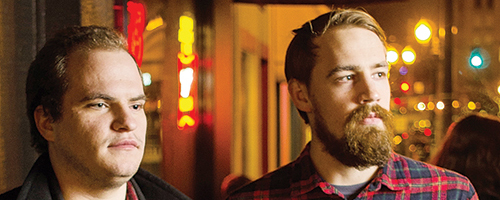If there’s anything college has taught me, it’s that even “well-educated” and “well-informed” people can mistake propaganda for information. Normally, I don’t care that much; people generally learn to check their sources after one or two embarrassing displays of misguided advocacy.
Kony 2012: ‘Cover the Night’ pushes the envelope too far
If there’s anything college has taught me, it’s that even “well-educated” and “well-informed” people can mistake propaganda for information. Normally, I don’t care that much; people generally learn to check their sources after one or two embarrassing displays of misguided advocacy.
In the case of Invisible Children’s Kony 2012 campaign, however, I’m making an exception. Misguided advocacy has given way to outright vandalism. Ignorance isn’t just obscuring the real problems faced by Africa at the moment; it’s papering cities all over the U.S. with false information and catchy slogans while causing extra work for those charged with cleaning up the mess.
Kony 2012’s “Cover the Night” campaign caused more harm than good. It’s time to stop this Kony nonsense and move on to causes with defined goals and plans beyond simply “share video, raise awareness.”
For those mercifully oblivious to what the Kony 2012 campaign is all about, I’ll shorten it down for you.
Invisible Children, a non-profit started in 2004, has been working to help keep children from becoming child soldiers. Earlier this year, the organization released a video about Joseph Kony, a Ugandan warlord recognized for kidnapping and training children for his army, the Lord’s Resistance Army.
The video quickly garnered millions of views, which was more or less the stated goal. In the video, Invisible Children identified its aim as simply to “spread awareness” of what was going on in Uganda with Joseph Kony so that the LRA and similar outfits could be stopped.
For the more intrepid laptop activists, the organizers put together kits of Kony 2012 gear for purchase. They also made posters available so that, on April 20, Kony 2012 campaign supporters could “Cover the Night” and bring awareness of Kony back to the forefront of people’s minds. This brings us to today.
Chalk and spray paint have been spotted all over Portland. The words “Kony 2012” have been scrawled on bathroom stalls, whiteboards, walls, tile floors and just about every other surface at least once. Posters have been tacked on bulletin boards, taped to walls and hung in display cases actually advertising important things. And, outside of Portland, things have been even worse.
This culminated in the defacing of monuments and sculptures across the United States. The peak of this bullshit was reached when somebody literally spray-painted the words “KONY 2012” onto a monument honoring the victims of the Boston Massacre.
At this point, I think it’s safe to say that Kony 2012 supporters have gone too far.
I could whine about how misleading the Kony 2012 campaign has intentionally been. I could point out that when the Kony 2012 video was shown in Uganda, it was met with such harsh criticism and such rage from the Ugandan people that the organizers showing the film were pelted with stones as the crowd rioted, righteously angry about the assumptions these affluent young Americans were making about their capacity to deal with their own problems.
I could list off dozens of issues in Africa that are a bigger deal than Joseph Kony, with a good number of these based in Uganda. I could talk about the “nodding illness” that has stricken so many Ugandan children or the ever-present risks of civil war.
But I won’t. Instead, I’ll go straight to the literature.
Invisible Children didn’t tell people to tag. In fact, the efforts were supposed to center around putting up fliers and stickers and wearing outfits with “Kony 2012” and the associated logo on them. There was supposed to be a 25-hour period of silence (ironically and perhaps intentionally overlapping the much-recognized LGBTQ “Day of Silence”) on April 19. The idea was to quietly and non-destructively get the word out there.
Spray paint and property damage were not supposed to be a part of the equation. The actions of those who tagged where they shouldn’t have had an unintended effect. Now, instead of seeing Kony 2012 as simple misguided advocacy, some members of the general public see the people involved as uninformed and disrespectful vandals. Everyone loses this way.
It’s bad enough that Invisible Children and the Kony 2012 campaign have spread so much misinformation to begin with. Now that their supporters have turned to defacing monuments and art—against the wishes of the organizers, no less—it’s safe to say that I, at least, have lost what little respect I had for them.
It’s lucky for Portland that our “activists” were lazy; all we have to clean up is a good number of posters, some marker scribbles and sidewalk chalk. But we might not be so lucky when the next nonsense cause takes the Internet by storm.
Learn from this: Respect landmarks and property, and maybe people will show a little more respect to your cause.



